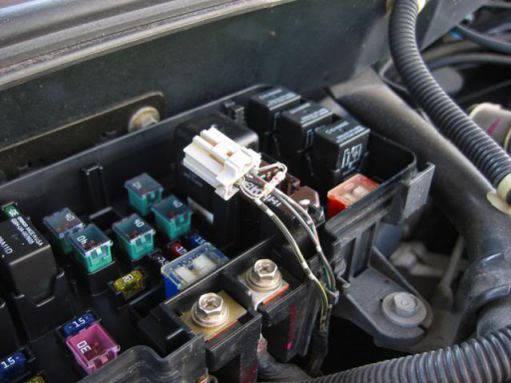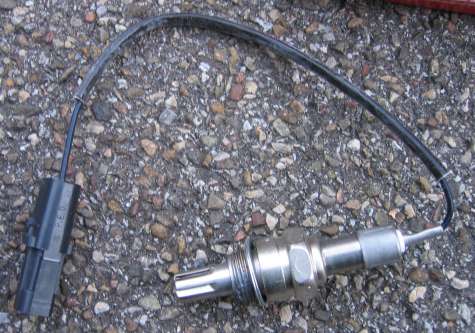If you were in the middle of a routine car check-up and noticed that your long term fuel trim stays at 0, or 0.0%, you’re right in thinking that there’s something wrong with this.
Your Long Term Fuel Trims are not reading or staying at 0 because of one or more of a few reasons:
- You Haven’t Reset your ECU
- You Haven’t Driven more than 50 Miles
- Your O2 Sensor Is Faulty
- Your Scanner Tool is Faulty
Table of Contents
What are Fuel Trims?

Before you try to diagnose any problems related to fuel trims, it’s important to understand what exactly they are and what they do for your car.
Your petrol engine runs on something called a stoichiometric air/fuel mixture. This basically means that your petrol engine always has a varying amount of fuel and air mixture. As the car engine sometimes demands more fuel and sometimes less, the electronic control unit tries to negotiate and adjust the fuel and air mixture accordingly for the engine.
We call these negotiations ‘fuel trims’. Fuel trims are what the ECU does to make sure that the air/fuel mixture is as close as possible to the stoichiometric point while also delivering sufficient fuel to the engine for its exact and current requirements. It does so with an injector pulse that either adds fuel or subtracts fuel from the air/fuel mixture to keep it at the optimum stoichiometric point at any given time.
Long-term fuel trims basically represent what your ECU has had to do on average to maintain the stoichiometric point over a period of time. This period of time is usually predetermined. While the ideal long-term fuel trim is a value that is close to 0, this amount is supposed to fluctuate. It is definitely not supposed to remain at 0.0% over an extended period of time.
If you’re looking for a fuel stabilizer for a small engine, check out our dedicated article here.
Top Solutions for Long Term Fuel Trim Stays at 0
Here are some of the top solutions for why your long-term fuel trim stays at 0.00% over a long period of time.
Reason 1: You Haven’t Reset your ECU

It might sound trite, but it’s important to resent your long-term fuel trims once in a while — especially if they stay at 0.00% for a long time. Here’s how you can reset the long term fuel trim:
Solution: To do an ECU reset, follow these steps.
- Make sure that the car is brought up to normal temperature. This is especially important if you live in a cold climate.
- Turn the ignition off.
- Carefully remove the ECU. You have to remove the main fuse.
- Now, carefully switch the ignition to ‘start’ but do not switch on the engine.
- Now you wait for the completion of the system check. The errors will be detected on their own.
- Now switch off the ignition.
- Replace any fuses that need to be replaced
- Turn the ignition on again, and wait for the completion of the system check.
- If you’re trying to bypass the idle relearn procedure (as you should) press the throttle down to the floor a few times. You should do it about six times or more.
- Now start the engine and your long-term fuel trims are reset.
Reason 2: You Haven’t Driven 50 Mileage after Resetting
You might be disappointed to see that your long-term fuel trim is still at 0.00% after doing a reset. However, you need to drive at least 50 miles before you start to see the fuel trim report.
Solution: Drive a total of 50 miles after doing the ECU reset to see if you’re able to view your long-term fuel trims. If you’re still not able to, you might have a different issue on your hands.
Reason 3: O2 Sensor is Faulty
Another possible explanation for why your long-term fuel trims stay at 0 is that your O2 Sensor or Sensors are faulty. The only way to diagnose this is to take a closer look at your O2 sensors and your short-term fuel trims.

Solution: You’ll have to hook up a scanner tool like BlueDriver to check out what your short-term fuel trims are. Short-term fuel trims are considered ideal between the 10% positive and 10% negative range. For example: if your short-term fuel trims are -0.7 and 3.1, you’re in a safe range and it is operating optimally.
Now, take a look at the upstream O2 sensors. They should be oscillating close to the range of 450mv. It’s very rare that both O2 sensors will stop working at the same time, so if your check indicates that both sensors are malfunctioning, it’s possible that there is something wrong with the wiring.
Reason 4: Your Scanner Tool is Faulty
Lastly, this one will make you facepalm: but your scanner tool might be the one to blame. You need to make sure that you’re using a high-quality OBD2 scanner that is able to accurately read your long-term fuel trims as well as your short-term fuel trims. Sometimes the scanner tools are only designed to read the O2 levels and hence might skew the long-term and short-term readings.
Solution: Invest in a scanner that is specially designed for DIY mechanic projects. Of course, you’ll always find a high-quality scanner tool with your mechanic, but if you’re trying to evade paying a hefty consultation price, you’re better off purchasing your own scanner tool that is simplistically built so you can understand what’s going on with your vehicle.
You’ll have to go for an OBD2 scanner tool, like FIXD which is specially built for syncing it up to your phone and reading long-term fuel trims and short-term fuel trims as well as O2.
For additional information on how to understand the short term and long term fuel trims, check out
Conclusion
There are a few things that could go wrong when you notice that your long-term fuel trim either doesn’t have a reading or always stays at 0. By simply performing a few checks, you can quickly troubleshoot. Resetting your ECU, driving 50 miles, checking your O2 Sensors, and Investing in a good OBD2 scanner are the top ways to solve this issue.
